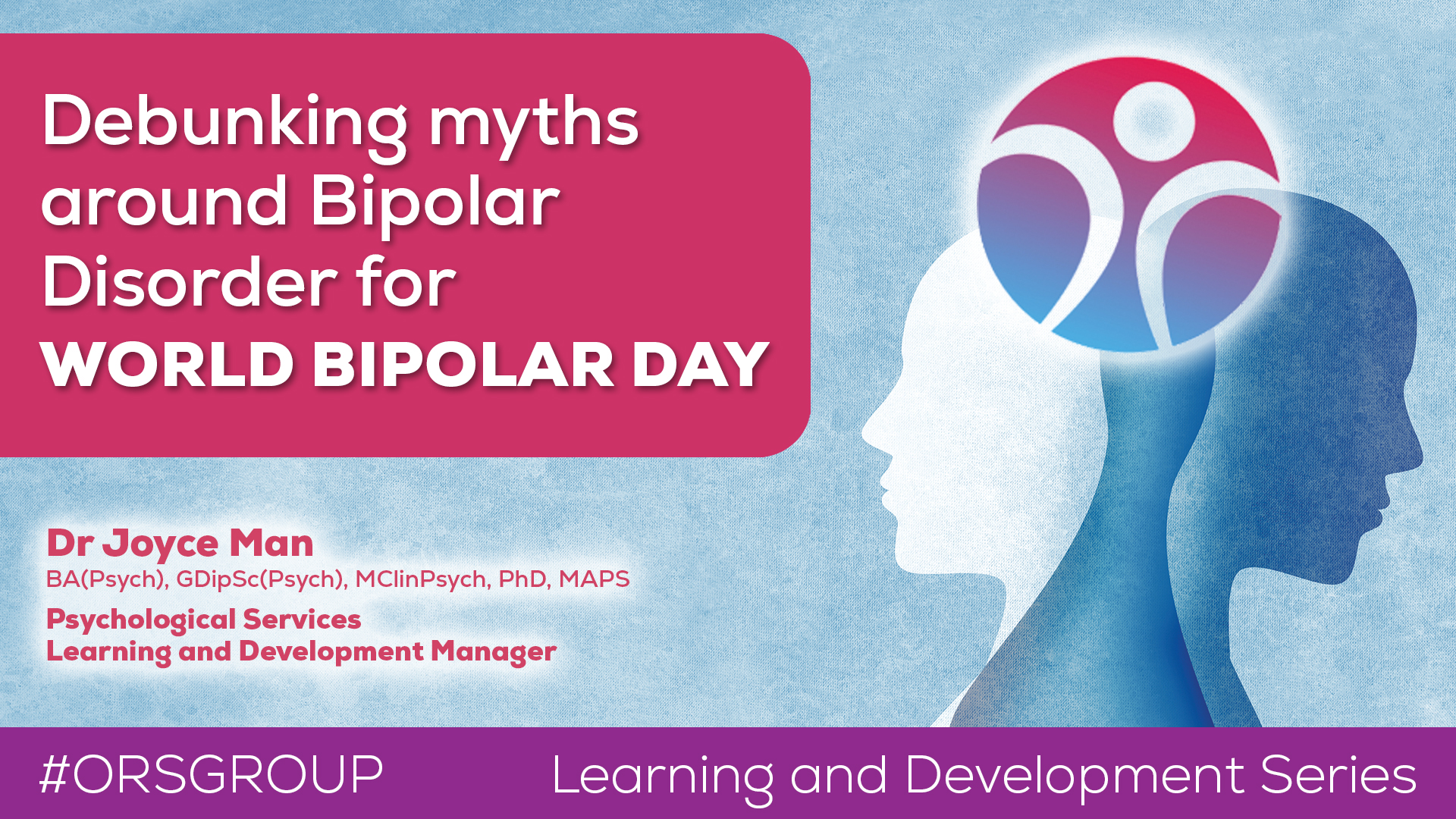In Australia, bipolar disorder affects one in 50 people each year. This rate is higher than the rate of all forms of cancer combined which affect one in 250 people and depressive disorders which affect one in 20 people. The Diagnostic and Statistical Manual of Mental Disorders, Fifth Edition which is the standard manual for assessment and diagnosis of mental disorders classifies bipolar disorder into three main types.
- Bipolar I is diagnosed when a person experiences at least one manic episode which is often accompanied by depressive episodes and hypomanic episodes. For some individuals, psychotic features such as hallucinations or delusions are also present.
- Bipolar II involves at least one hypomanic episode and at least one depressive episode. Hypomania is a less severe type of mania. A person with bipolar II disorder may or may not experience psychotic symptoms. Individuals typically return to their usual functioning between episodes.
- Cyclothymic disorder (cyclothymia) is defined by numerous periods of hypomanic and depressive symptoms lasting for a minimum period of two years (one year in children and adolescents). These symptoms are not severe enough to meet criteria for a hypomanic or depressive episodes.
In Australia, bipolar disorder affects one in 50 people each year. This rate is higher than the rate of all forms of cancer combined which affect one in 250 people and depressive disorders which affect one in 20 people. The Diagnostic and Statistical Manual of Mental Disorders, Fifth Edition which is the standard manual for assessment and diagnosis of mental disorders classifies bipolar disorder into three main types.
Myth: People who have Bipolar disorder are just moody
Jane: Speaking from just my own life, I don’t think I’m a particularly moody person. I do feel my feelings very strongly, but this is pretty different to being moody. E.g. I don’t have bouts of extreme happiness, anger, sadness, etc. (unless there’s a really good reason).
Joyce: The best of us experience bouts of sadness, agitation and anxiety in response to environmental stressors. However, the highs and lows experienced in bipolar disorder in comparison are much more extreme, debilitating and prolonged. For some individuals, short stays in hospital are needed.
Myth: People with bipolar disorder are manic all the time
Joyce: Mania and hypomanic states are often less common than depressive episodes. An individual with bipolar, in particular, bipolar II are also likely to have periods where their everyday functioning is relatively unimpaired.
Jane: I have only been manic around the time of experiencing psychosis, which has happened very rarely.
Myth: Mania is enjoyable, productive, or fun
Joyce: For some individuals, manic episodes can feel good in the short term. However, if left untreated, the impulsive and reckless behaviours associated with mania can lead to detrimental consequences for the individual e.g. risky sexual encounters, excessive gambling, and excessive shopping. A manic person may have trouble maintaining control of their thoughts and actions and may even lose touch with reality.
Jane: Speaking from just my own experience, mania is scary. You do things and you don’t realise why you’re doing them, and in the past usually I’ve had no control over stopping my mania without intervention.
Myth: Artists with bipolar disorder will lose their creativity if they get treatment.
Jane: I am a really creative person. I can still do creative things, but I do wonder if my medications have changed my creative potential or the extent of my creative imagination.
Joyce: What is more likely is that untreated bipolar does more harm than good. Seeking treatment (in most cases, a combination of psychotropic medication and evidence based psychotherapy) will enable individuals with bipolar to reach better mental clarity for creative pursuits.
What would you like people to know about those who have Bipolar Disorder?
Jane: I don’t feel like my bipolar is a hindrance, and I’m not embarrassed by it. I feel like it’s related to why I excel in creative pursuits, and why I can do creative things that other people often can’t. People shouldn’t be scared of people with bipolar disorder. If the condition is controlled (and it is often easy to control even in severe cases from my experience), people with bipolar are the same as any other people you would come across in life.
Community links and supports
- Black Dog Institute – https://www.blackdoginstitute.org.au/resources-support/bipolar-disorder/
- Beyond Blue – https://www.beyondblue.org.au/the-facts/bipolar-disorder /


